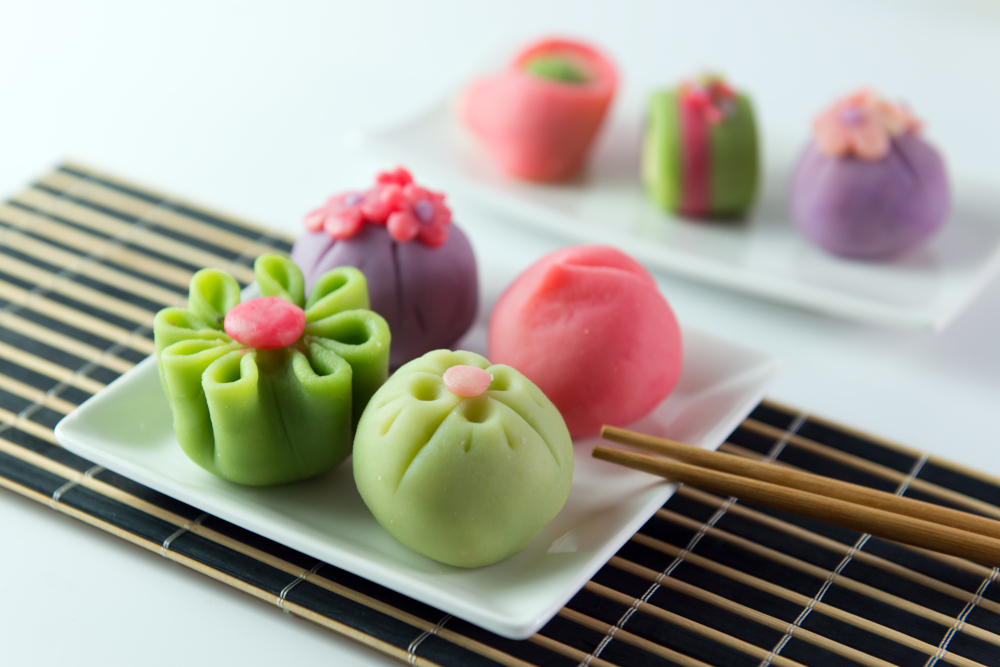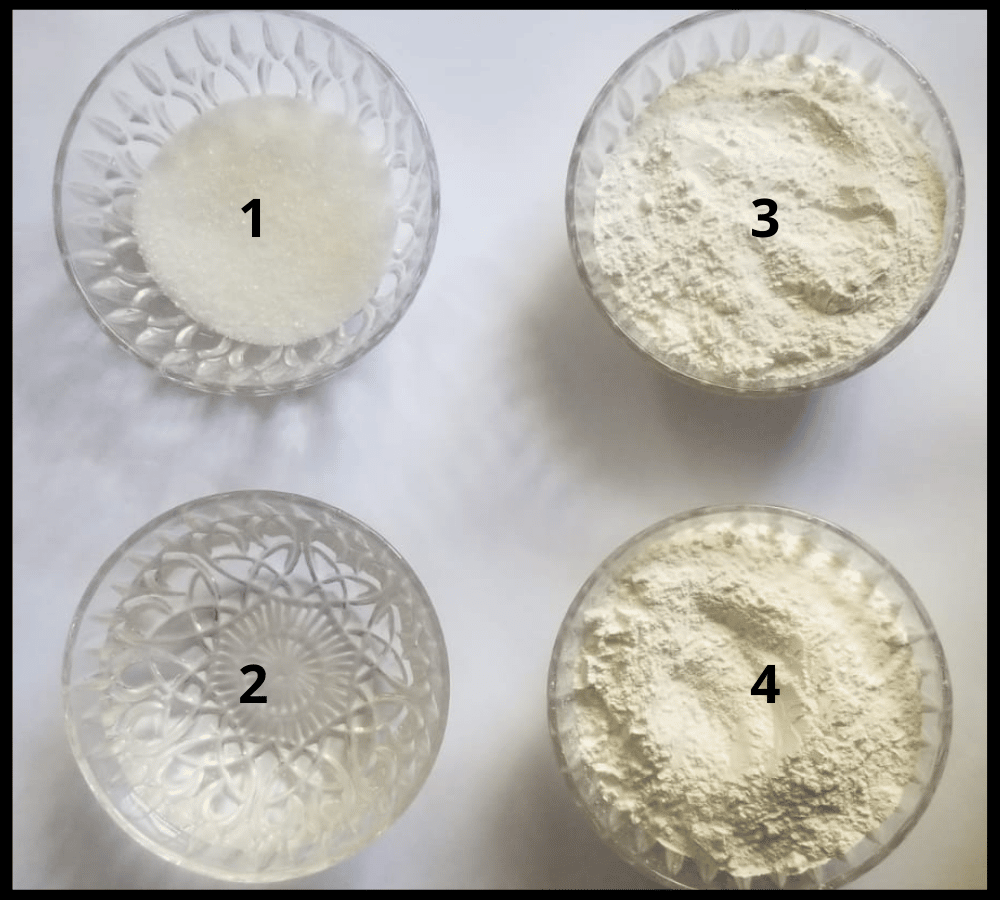Mitarashi Dango: What’s this Sweet, Savoury Treat?
Nov 5, 2022
BY Sarah Roach

Every country has their own twists on local sweets, and the Japanese bring forth theirs in the most simple of ways, yet it’s a one of a kind experience we should all try!
Traditional Japanese sweets, also known as wagashi (和菓子) can be traced back to hundreds of years ago and now stands as popular treats not only amongst the locals, but an international audience as well!

Wagashi
These are known as traditional Japanese confectionery that can range from being simple to make, to the most extravagantly designed sweets found at a tea ceremony.
However, dango is a popular and simple kind of wagashi you can find at street stalls or at a matsuri (festival), ranging in varying colours and flavours. Their seasonality is also quite unique, such as the Hanami dango enjoyed during the spring season when going flower viewing.
On the other hand, Mitarashi dango is one you can find almost anywhere during any season, so it’s sure to be enjoyed all year round! From grocery stores to local vendors, be sure to grab one on your next trip!

Grilling Dango
Mitarashi Dango
So what’s Mitarashi Dango? (I’m glad you asked…hehe). Round, white, rice dumpling balls, skewered in sets of 3-5, with a slight char (due to grilling) and finally glazed in sweet soy sauce syrup, is the basic sentence that sums up this treat! It definitely does not stand along the line of being a super sweet treat, as the chewy rice balls with its charred flavour tastes satisfyingly great where the sauce gives you both a sweet and salty tang! (quite a varied flavour and texture profile.)
Small History
Believe it or not, these dumplings were actually founded in Kyoto at a small shop just outside the entrance to Shimogamo Shrine, known as Kamo Mitarashi Tea House. The word itself; Mitarashi was inspired by the pond outside the shrine called Mitarashi pond. The bubbles seen in this fountain of purifying water was said to inspire the round shape of this dango.
Now I want to try it!
Let me tell you, with all that being said, Japan is not as far as you think. In fact, if you grab hold of a few simple ingredients, you can make this treat in your very own kitchen. Which brings us to the focal point of this blog, which is to make your very own Mitarashi Dango at home.
So I always lay the disclaimer out that I’m am in no way a professional chef or master, but from following the recipe from JustOneCookbook, we can create some amazing rice dumplings. Let’s get into it, shall we?

Step 1:
First things first, we shall make the dumplings which are super easy peasy to make. You will need to gather the items above:
1- 40g of white sugar
2- ⅔ cup of warm water
3- ⅔ cup of rice flour
4- ¾ cup of glutinous rice flour
5- Not featured in the picture, but you shall need bamboo skewers.
While we’re at it, let’s drown…I mean soak some skewers in some water. (teehee).

Step 2:
Side note: For this step, geography has come to haunt you (oh no!). However, it’s quite true that depending on the climate of where you are, you need to adjust the water to more or less. (For example: a dry climate may need more water)
Take BOTH flours and add them to a mixing bowl, followed by the sugar and by waving our magic chopsticks, get in there and mix slowly while adding your warm water, until it forms a clumpy texture that somewhat holds together.

At this point, we can then use our hands to form the dough together into one ball. (The texture should feel like you are squeezing an earlobe.)

Step 3:
First let’s put a large pot of water to boil as you don’t want your dango balls cracking or drying out before they get to cook.
Now, time to create our lovely round dango balls! By using a scale, you want to ensure each is of the same weight, which I highly recommend sticking to 20g. (Trust me, I’ve tried 30g with my gluttonous eyes and it did not turn out too pretty…lol).
Step 4:
Execution time!!! I’m just kidding!
It’s time to give edible life to these rice balls.First and foremost, prepare a bowl of iced water to the side.
Now as the water begins to boil, gently drop each ball with a smooth, continuous arm motion (which I’ve yet to master), as you will clearly see soon, that my dango balls lost some of its… roundness (sad moment*).
Side Note: keep stirring to avoid the dango balls sticking to the bottom of the pot.
Once the dango balls float to the surface of the pot, let it boil for about 2-3 minutes again then immediately transfer them to your iced water bath.

Step 5:
Now that your dango balls have cooled a bit, skewer them into rows of 3-5 (totally up to you). To char them, a grill is usually used, but if you don’t have one like myself, here’s a couple other options: a kitchen torch, holding them directly over heat and turning or using a non-stick frying pan. (Once it gets the job done! hehe).
Something I’ve noticed is that these can be very sticky so you should rest the charred dumplings along a coated surface to prevent sticking.
Step 6:
It’s sauce time! And it’s super simple to make. All you need to add to a saucepan are the following:
- 4 Tbsps granulated sugar
- 2 Tbsp Mirin/rice wine (but if you’re opting out the alcohol, then a simple substitution of water and sugar in a 3:1 ratio will do)
- 2 Tbsp soy sauce
- 150ml of water
- 2 Tbsp of potato starch (can substitute with cornstarch)
Mix all the ingredients thoroughly to dissolve the starch THEN place over the stovetop on heat. Keep whisking the mixture until it thickens. (At this point, I did not let it thicken too much, nor did I leave it too runny, so it was just right in the middle.)
Side Note: Do not overthicken as when the sauce cools, it thickens much more and will be difficult to pour.
Step 7:
You’ve reached the pinnacle of your hard work! Finally smother that deluxe sauce over your rice dumplings and you’ve got yourself a treat!
Just look at that. It’s aesthetically amazing and let me tell you, it tastes just as amazing too! It took about 2 minutes for me to finish it (hehe). It was just that good!
From eyeing these goodies in an anime or drama, you can now make these at home quite easily! Will you be making them? Don’t shy away from having a super awesome Japanese dango feast in your very own kitchen!
Join our Retro Shibuya Food tour to learn more about Japanese snacks in a very special place!
PIN THIS FOR LATER
Book your pocket wifi now to stay connected through your entire Japan Journey!

Be sure to get the JR Pass to make navigating Japan during your trip that much easier!

YOU MIGHT ALSO LIKE










